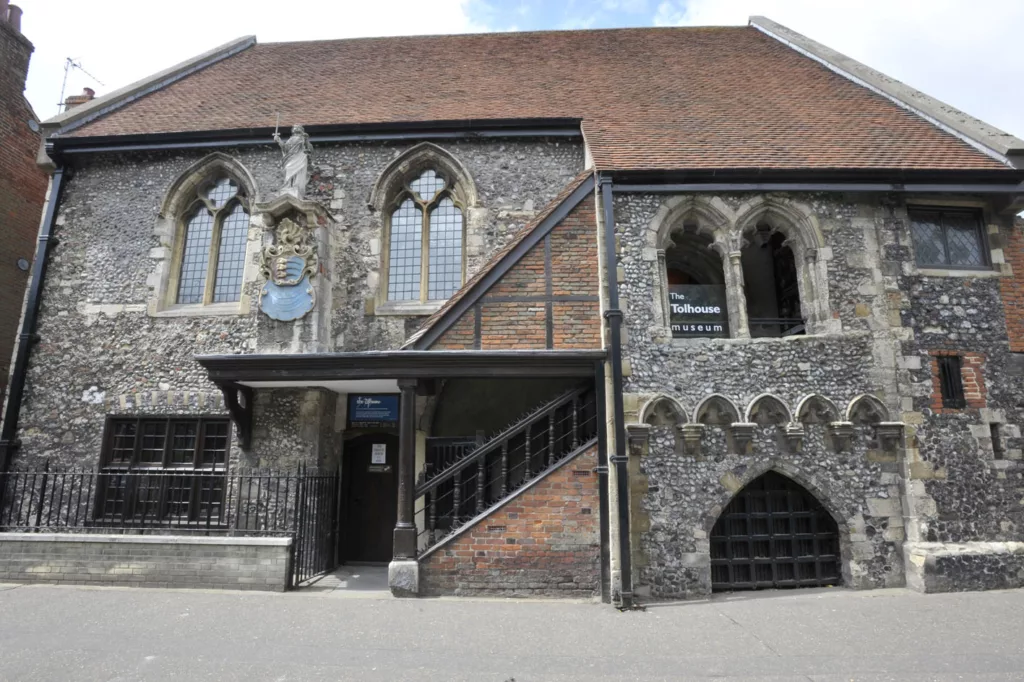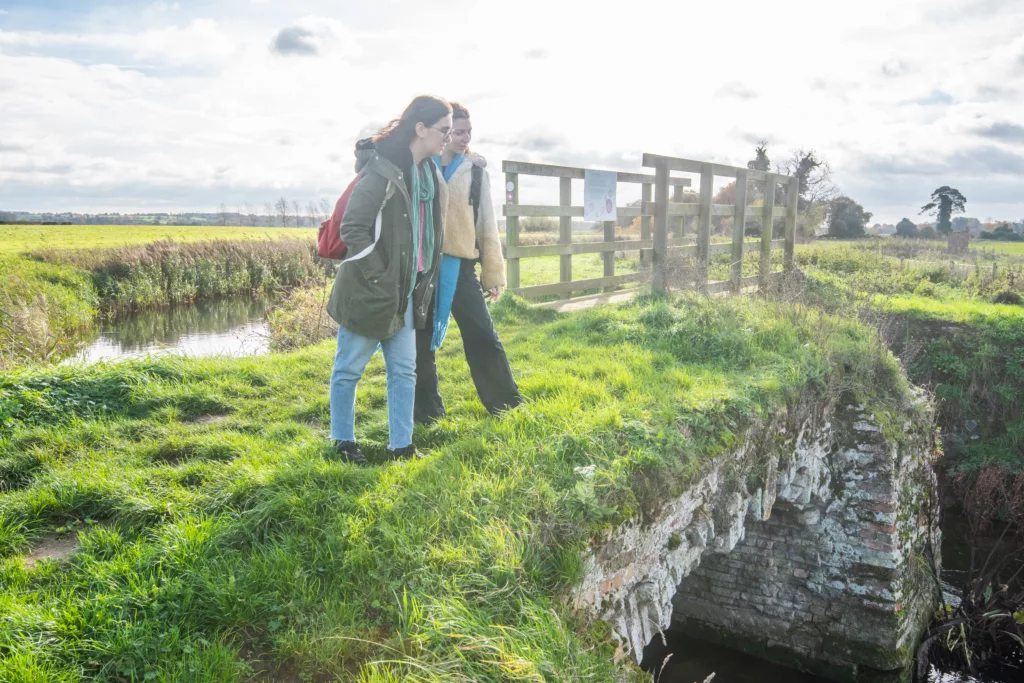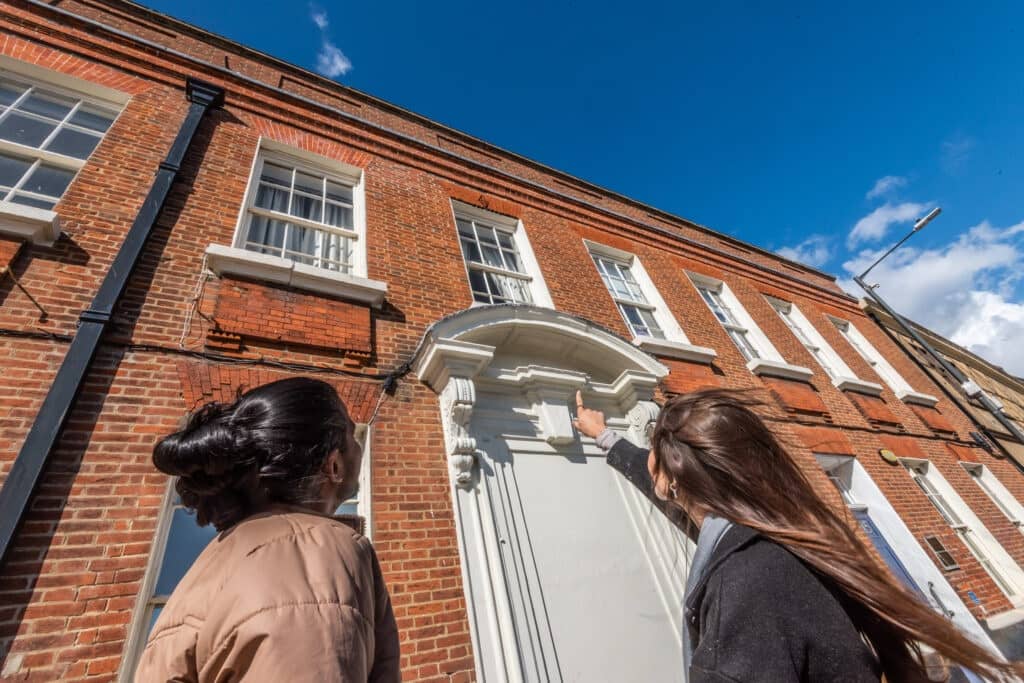
Elizabeth Fry – Norfolk’s ‘Angel of Prisons’
When Elizabeth Fry visited Newgate Prison in 1813 it changed her life. And as a result she changed the lives of countless others.
What she saw at Newgate was harrowing. Over 300 women were crammed together, many with children. Those convicted of murder were jammed in with people who’d stolen a loaf from the market, alongside women who hadn’t yet gone to trial. Conditions were filthy, freezing and violent. So Elizabeth, Quaker minister and mother of 11, set to work.
Elizabeth Gurney was born in 1780 in Gurney Court, Magdalen Street, Norwich, where a plaque commemorates her, and also at the Friends’ Meeting House in Goat Lane. Also, the UEA’s School of Social Work and Psychology is housed in the Elizabeth Fry building. Daughter of influential Quakers, aged 20 ‘Betsy’ married Joseph Fry, cousin of the Fry confectionery family, also Quakers. She was hugely inspired by the travelling Quaker speaker William Savery, and committed her life to good works. After her Newgate experience she campaigned tirelessly for prison reform including segregation of the sexes, female matrons for female prisoners, education and employment. Called the ‘Angel of Prisons’, she cared about rehabilitation over punishment.
Her drive for change played a huge part in transforming prison ships, the abolition of slavery, housing for the poor, soup kitchens and nursing. Elizabeth is one of only three women celebrated on a Bank of England note (£5), pictured reading to women prisoners. Long after her death in 1845, Elizabeth Fry still inspires social transformation today.

The Tolhouse Gaol
A few minutes walk from Great Yarmouth’s historic South Quay there’s a building with an eclectic past. Strangely out of place in the modern streets, Tolhouse Gaol has stood in the coastal town for around 800 years, home to a long history of desperate men and women.
Originally a rich 12th century merchant’s house, it was built to impress. The robust stone walls, carved doorways and arched windows tell a story of the owner’s success and status. Over the years it passed into the hands of the the town administrators, transforming into one of Great Yarmouth’s most important civic buildings and one of the oldest prisons in the country. It was first used as a courtroom, then a town gaol complete with the notorious ‘hold’, as the miserable dungeon was known. Its walls have borne witness to riots and rebellions and heard the despairing pleas of those accused of witchcraft, piracy, theft, smuggling and murder. After a turn as the local police station, Tolhouse Gaol became a museum in 1880, surviving two bomb blasts during the Second World War.
Today the Tolhouse Gaol tells the hair-raising story of crime and punishment through the ages in Great Yarmouth. It’s normally closed for the winter, but its unique exterior is still worth a visit and out-of-season Yarmouth is wonderfully atmospheric for artists and photographers. And if you’re looking to hire an unusual heritage venue full of character and stories, definitely consider booking the Tolhouse Gaol.

Murder Mystery Train
Ah, the romance of train travel! The scenery, the steam! The mystery…the murder! Because on this journey someone has evil on their mind. And before the night is out dastardly crime will be committed. So Whodunnit? All the clues are there. You just have to solve them. From Sherlock Holmes to Agatha Christie, the Brits have an appetite for crime. And for good food. So North Norfolk Railway combines themed murder mystery journeys with fine dining and a bar, all onboard a beautiful old steam train. This is murder most civilised. Whether you’re a Miss Marple or Miss Scarlett, Poirot or Professor Plum, this is sure to be a Memorable & Mysterious Evening! So Whodunnit? That’s for you to solve! Can you unveil the villain?
At 7.00pm a steam locomotive will leave Sheringham station pulling ’The North Norfolkman’ luxury dining train. On the move, dinner will be served, but while you tuck into three delicious courses, keep your eye on the cast of suspicious characters joining you for the journey! Drama unfolds over the evening and by the time coffee & mints are served someone will have collared the culprit. All will be revealed when you arrive back in Sheringham. Each mystery has a distinct theme so dress the part, or remain inconspicuous. The decision is yours. Dressing up’s not compulsory, but it is fun! And there’s a prize for the most successful sleuth. So always think twice before striking up conversation with strangers on a train.

Murder at the Mill?
December is made for evenings in the pub. At least that’s what Thomas Valentine thought as he walked out of the winter wind and into the warmth of the Windmill on a Monday in 1858. But some nights take a turn for the worse…
There was ‘considerable excitement’ (according to the Lynn Advertiser & West Norfolk Herald) when Valentine’s body was found in the River Nar on Wednesday morning, his skull fractured and arm sticking out of the water. It seemed the gamekeeper had stumbled off the bridge. Or was it a case of murder at the mill?!
At the inquest it was reported Valentine was drinking with the publican, William Rann, and pals who worked on the lighter boats, carrying cargo along the river. He’d been jovial, though not drunk, singing on the bridge. No unpleasantness passed between the men, just a bit of banter and the odd threat which no-one took too seriously. And yet, yards from where you stand, Thomas Valentine met his end. The jury ruled a tragic accident, others believed Rann had clouted Valentine on the head before he fell into the cold water. Whatever the truth, beware muddy river banks after a few pints!
Pentney is also the birthplace of Fred Rolfe, ‘King of the Norfolk Poachers’, whose tangles with the law and remarkable tales of 1800s East Anglia were recorded by Lilias Rider Haggard in ‘I Walked by Night’ (1935). It’s a fantastic evocation of historic rural life in Norfolk.

The Witches Heart
King’s Lynn. Friendly isn’t it? But this handsome West Norfolk town has a dark heart. And they say it belonged to a witch. Inside a diamond carved into the red brick above a window of Numbers 15 and 16 Tuesday Market there’s the shape of a heart, said to be the mark of Margaret Read, aka Shady Meg, who was burned at the stake in 1590. As she screamed in an agony of fire, her still-beating heart ripped itself from her chest, slammed into the wall at the marked spot and defying gravity, flew to the River Ouse where the waters bubbled like a cauldron as Meg’s heart sank beneath.
And you didn’t have to be suspected of witchcraft to meet a horrifying end. Found guilty of poisoning her mistress, in 1531 a King’s Lynn maidservant, whose lonely name is forgotten, was wrapped in chains draped over a gibbet above a cauldron of boiling water. She was plunged in, over and over again, until she died. There are only two other records of execution by boiling water in the UK, both at Smithfield in London, and both servants accused of poisoning.
But the real heartbreak is the way a society consumed by fear and superstition launches violent crusades against the most powerless. And the horror is, we still do. Can there really be justice for our murdered ancestors? How did they spend the last hours of their lives? We can at least bear witness to their infinite sorrow.
Build your own itinerary
If you fancy creating your own itinerary for a day trip to Norfolk or a longer visit, it couldn’t be simpler. Just go to Search Activities and select from our wide range of free and paid-for experiences, saving any that capture your imagination with the click of a button.
Once you’ve finished, you’ll find all the information stored in My Favourite, where you can drag and drop activities to create your own day-by-day itinerary! You can download this to a calendar and even share it with friends.
